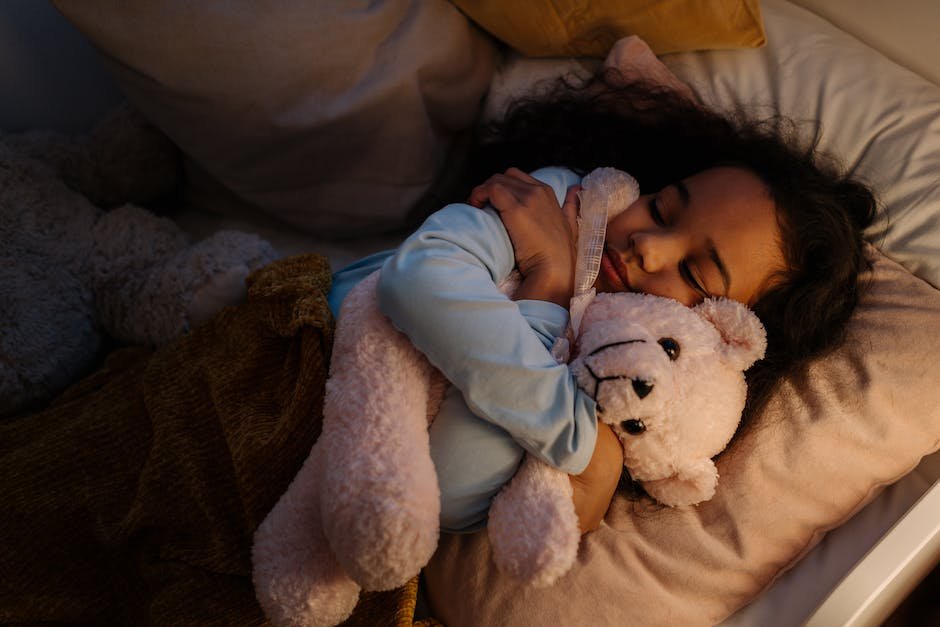
As a society, we are becoming increasingly aware of the unique challenges faced by children within the autism spectrum. One aspect that often remains overlooked, however, is the important role that sleep plays in the lives of these individuals. Autism can often be accompanied by poor sleep habits, which can worsen existing symptoms, making it even more crucial to prioritize and manage sound rest. Through Cognitive Behavioral Therapy for Insomnia (CBT-I), a scientifically validated intervention for insomnia, it’s possible to manage these sleep issues effectively. This therapeutic approach offers principles and strategies that have proven impressive results on sleep health. Whether you’re a parent seeking strategies or an interested party wanting to deepen your understanding, this examination into autism, insomnia, and CBT-I can provide valuable insight.
Understanding Autism
Understanding Autism: Common Sleep Concerns and Their Importance
You’ve probably heard the saying “Sleep is the golden chain that ties health and our bodies together”. In essence, a good night’s sleep is vital to our overall health and wellbeing. But what happens when it’s not so easy to come by? This can be a reality for families loving and nurturing a child with Autism. Sleep concerns are commonplace in the autism community, proving a daunting challenge for families worldwide. Let’s break this down and understand why these sleep issues matter so much.
Firstly, the prevalence of sleep problems in children with Autism Spectrum Disorder (ASD) is high, with estimates falling between 50-80%. That’s significantly higher than sleep-related concerns in typically developing children. In short, if you have a child with ASD, there is a strong likelihood they may experience some form of sleep difficulty.
The most common sleep issues seen in children with autism include difficulty falling asleep, inconsistent sleep routines, frequent waking, and early morning waking. This could essentially mean that a child might stay awake most of the night, keeping the parents awake as well. In turn, it noticeably affects the child’s overall health, behavior, and learning capacity.
Sleep issues might also exacerbate certain behaviors associated with Autism. Insufficient sleep can lead to increased hyperactivity, compounding difficulties with social interaction, repetitive behaviors and communication throughout the day. These challenges are crucial to address since sleep directly influences daytime functioning, affecting not only the child but the whole family.
Moreover, Research has associated good sleep with significant improvements in attention, behavior, memory, and overall mental and physical health. On the other hand, persistent sleep issues can increase the risk of obesity, impact immune system functionality, and intensify symptoms of mental health disorders such as anxiety and depression. Thus, when children with Autism face sleep issues, they may, unfortunately, miss out on these essential benefits.
Understanding why sleep issues occur can vary in each individual with Autism, often being multifactorial. Some factors playing crucial roles include biological aspects like their natural sleep-wake cycle, a higher presence of gastrointestinal problems, and heightened sensitivity to external stimuli like light, sound, and touch. Moreover, certain medications and presence of co-existing psychiatric disorders might influence sleep quality and duration.
Sleep problems are notably one of the most stressing aspects of raising a child with Autism. But remember, you’re not alone – this is a shared struggle among many families. And yes, it’s a major concern that needs ample nurturing and professional guidance.
In conclusion, It is essential to recognize sleep issues associated with Autism for what they are: significant, impactful, and deserving of attention. We understand the challenge, and remember, every step you take, every strategy you employ, every night you stay awake – you’re doing an incredible job. The journey to a good night’s sleep is not a sprint but a marathon, one we are journeying together for our beloved children. So, keep up the excellent work, sleep guardians!

Photo by jrlawrence on Unsplash
Introduction to Cognitive Behavioral Therapy for Insomnia
Title: Unlocking Better Sleep with Cognitive Behavioral Therapy for Insomnia (CBT-I)
For families dealing with sleep disturbances in children with Autism Spectrum Disorder (ASD), the road can often feel a tad overwhelming. Questions may flood the mind as one tries to seek solutions and create a serene sleeping environment for their child. Fortunately, in our age of advanced science and understanding, there’s a tangible, proven method parents can consider. Welcome to the world of Cognitive Behavioral Therapy for Insomnia (CBT-I).
CBT-I is a bona fide therapeutic approach specifically designed to combat insomnia. It’s a non-medicinal, solution-focused treatment aiming to help individuals change their thoughts and behavior patterns that may be hindering optimal sleep.
Unlike traditional medication, CBT-I doesn’t just mitigate symptoms, it tackles the root of the problem. It aims at rectifying harmful sleep habits and erroneous beliefs about sleep, which ultimately channel insomnia.
The process begins by monitoring and recording sleep patterns to understand better the factors disrupting sleep. This stage is known as sleep restriction. The data is thoroughly analyzed to identify trouble areas and times.
Interestingly, recognizing these patterns guides the establishment of a sleep schedule. This schedule, or sleep consolidation, narrows sleep times to when sleep happens most efficiently. This concept doesn’t shun away from waking periods during the night but focuses more on ensuring that when asleep, it’s deep, restorative sleep.
The therapists understand that one’s environment plays a crucial role in sleep. They coach on sleep hygiene, which encompasses creating the best oxidative atmosphere – keeping the room cool, in perfect darkness, perhaps with soothing sounds, and maintaining a clutter-free sleep area to reduce physical and mental distractions.
Another vital component of CBT-I is stimulus control. This technique reconnects the bed with sleep and bans any other activities like watching TV or using phones in the designated sleep area, minimizing any sleep disturbance.
Relaxation training is included to help manage or eliminate tension that hampers sleep. Progressive muscle relaxation, deep breathing techniques, and meditations go a long way in easing anxiety and inviting sleep.
Lastly, cognitive therapy swoops in to help identify and change unhelpful thoughts and beliefs about sleep. CBT-I aims to reconstruct any pronounced dread for bedtime into welcoming the prospect of a good night’s sleep.
Addressing sleep disturbances in children with ASD can be challenging, but it’s undoubtedly achievable. CBT-I provides hope and a practical solution that can transform not just the child’s life but also benefit the entire household. The road might be winding, but the destination—a good night’s rest—is unquestionably worth it. Commit to understanding the problem, manifesting patience, and continually learning. Always remember, you are not alone in this journey. Various resources, professionals, and supportive communities are available and eager to help every step of the way. So take heart, dear parents, as every night’s sleep is a step towards a brighter tomorrow.

Applying CBT-I in Autism
Enhancing Sleep in Children with Autism: The Power of Cognitive Behavioral Therapy for Insomnia
Understanding and addressing sleep issues in children affected by Autism Spectrum Disorder (ASD) is critical. Implementing Cognitive Behavioral Therapy for Insomnia (CBT-I) principles can be a game-changer for these children.
However, it can be daunting for parents to consider adopting a therapeutic approach at home. Rest assured, applying these principles is not as complicated as it may seem—particularly when we demystify the CBT-I principles and show how they can fit into daily routines at home.
Let’s begin by familiarizing ourselves with the ABCs of CBT-I principles tailored for children with ASD.
- Establish a Consistent Sleep Schedule: This approach reinforces the body’s natural sleep-wake cycle. Bedtime and wake-up time should be consistent, enhancing the natural rhythm and optimal sleep pattern for youngsters. A predictable routine is comforting for children with ASD, making the implementation of this principle fairly straightforward.
- Create a Peaceful Sleep Environment: A serene sleep atmosphere lands a winning punch against sleep troubles. Factors like noise, light levels, and the room’s temperature need meticulous attention. Children with ASD often exhibit heightened sensitivity to these external factors.
- Promote Healthy Sleep Hygiene: It wouldn’t be an overstatement to say that practicing good sleep hygiene can lead to drastic improvements. Curating a conducive pre-sleep routine like mind-calming activities, limiting exposure to screens, and maintaining a balanced diet can foster better sleep quality.
- Implement Stimulus Control: The principle revolves around associating bedtime with sleep and nothing else. Practices like using the bed only for sleeping and not for extended hours of reading or playing help establish the concept of ‘bed = sleep’ in a child’s mind.
- Introduce Relaxation Techniques: Yoga, deep breathing, and progressive muscle relaxation are some techniques that can effectively manage stress and anxiety. Often, children with ASD struggle with anxiety, directly impacting sleep quality. The regular practice of these techniques can greatly ease bedtime anxiety.
- Utilize Cognitive Therapy: CBT-I firmly believes in dismantling unhelpful thoughts and beliefs about sleep which may be exacerbating the insomnia. Although slightly more complex to apply successfully at home, introducing simpler cognitive therapy tools gradually to children with ASD might be helpful.
It’s crucial to understand that applying the CBT-I principles depends largely on the child’s unique needs. Some may benefit more from one principle over another, and consistency is key. Moreover, consider these principles as tools in your parenting toolkit rather than a strict recipe to follow.
Professional assistance, of course, is always available and should be sought whenever necessary. Online communities, books, and clinical psychologists specializing in CBT-I are great resources to lean on. They can offer more personalized guidance and even aid in tracking progress.
While the journey of improving sleep in children with ASD can be difficult, remember that it’s also rewarding. With patience and persistence, small steps toward better sleep hygiene can create a big difference. After all, every parent knows the joy when their child sleeps peacefully. Incorporating CBT-I principles with warmth, understanding, and love can usher in positive changes not just in sleep patterns but the overall quality of life for these special little ones and their families.

Possible challenges and solutions
Navigating the Challenges of Cognitive Behavioral Therapy for Insomnia (CBT-I) for Parents
When the decision is made to embark on Cognitive Behavioral Therapy for Insomnia (CBT-I) to address sleep issues in children with Autism Spectrum Disorder (ASD), parents may face an array of unexpected challenges before they see improvements. However, through some helpful strategies, parents can expect to overcome many hurdles that come their way.
One primary challenge that parents may encounter is resistance from the child after implementation of CBT-I. As with any significant change, children with ASD may initially resist alterations to their routine, including modifications to their bedtime schedule. This could manifest as heightened anxiety or difficulty in adjusting to new sleep patterns. This is where reinforcing gradual change is vital. Just as Rome wasn’t built in a day, parents shouldn’t expect immediate adaptation to these changes. Encourage steady modification to new habits for a smoother transition.
Additionally, implementing CBT-I is not a one-size-fits-all approach, and the method should be tailored to the individual child’s needs. Parents may find some recommended techniques of CBT-I don’t work for their child, or they may need to try several different methods before they find a solution. This is totally normal, and a few trials and errors should not be seen as setbacks but a part of the process. Always remember that each child is unique and may respond to different techniques in their own way.
Another challenge could be maintaining consistency, especially during stressful times. Let’s face it, life brings about unexpected circumstances, and it can be easy to fall back into old habits. However, consistency is king when it comes to CBT-I. Holding to the course, despite the ups and downs, is essential for lasting success. To help maintain consistency, consider forming a support system of trusted loved ones or connect with online communities of parents implementing CBT-I. It’s wonderful how the collective strength of a community can help weather the storm.
Lastly, parents might struggle with managing their expectations; after all, it’s only natural to want immediate results. However, patience plays a critical role in the CBT-I journey. Habits, especially deeply ingrained sleep habits, take time to shift. And like any good thing in life, it takes fortitude, perseverance, and a touch of grace.
The implementation of CBT-I can indeed pose some challenges. However, with patience, consistent efforts, and a supportive community, these hurdles can be crossed. The path may seem daunting, but remember, every small victory is monumental and contributes to the overall goal of improved sleep for children with ASD.

Photo by daiga_ellaby on Unsplash
Professional Help and Resources for CBT-I
Now that we’ve ventured down the road of understanding sleep issues in children with Autism Spectrum Disorder (ASD), explored the promising results of Cognitive Behavioral Therapy for Insomnia (CBT-I), and shared important strategies for implementation, let’s delve into how parents can seek professional help and explore the wealth of resources available.
Seeking professional help is a crucial step for families handling sleep issues in children with Autism. Parents can start by reaching out to pediatricians, who often have a broad network of referrals to specialists such as pediatric sleep specialists, child psychologists, or behavioral therapists. Each of these professionals can provide expert guidance on the process of CBT-I, identifying individualized solutions catered to the child’s unique needs.
Parents can also pursue consultations with a Board Certified Behavior Analyst (BCBA). These professionals have specialized training in implementing behavior-analytic therapies like CBT-I and can often provide personalized coaching to parents. Their expertise can be invaluable when tailoring interventions to the unique challenges and strengths that children with ASD display.
Next, it’s important to remember that while professional help is crucial, there is also a vast amount of resources available to supplement this from organizations and online communities.
Notably, the Autism Speaks website is a go-to resource for ASD related issues, including sleep disorders. They offer comprehensive toolkits such as the Sleep Strategies for Teens with Autism: A Guide for Parents and a Sleep Toolkit for Parents, providing strategies and insights on managing sleep issues.
Similarly, the Autism Community in Action (TACA) offers webinars, articles, and one-on-one online meetings for parents seeking guidance. They have numerous resources available specifically addressing sleep issues in children with Autism.
Online forums and groups can also be of great assistance. Websites like Facebook and Reddit host numerous groups that cater specifically to parents of children with ASD dealing with sleep issues. Here, parents around the globe share their experiences, advice, and provide a shoulder to lean on during difficult times.
Additionally, downloadable apps might come in handy. Autism Parenting Magazine offers an app populated with articles, advice, and real-life stories. It also hosts several pieces on sleep-related issues, offering another channel of information for parents on-the-go.
Last but not least, do not underestimate the power of local support groups or workshops. They are often hosted by schools, health care institutions, or non-profit organizations. These meet-ups provide opportunities to learn from experienced professionals and other parents navigating similar challenges.
Unquestionably, tackling sleep issues among children with ASD is a daunting task. But with professional help and the use of these resources, it becomes more approachable. As parents, the most important thing to remember is, you’re not alone. There’s a whole community out there dedicated to helping and ensuring the best for these special children. Believe in your child, believe in yourself, and never hesitate to seek the help when it’s needed.

Parents are the first line of defense in managing children’s sleep concerns and creating a conducive environment for better rest. Yet, it’s essential to recognize when professional help might be needed. Autism and sleep challenges can be a complex intersection, but with the resources available, no one should feel alone in their journey. From books and apps, to therapy centers and online platforms, there’s a rich well of aid waiting to be tapped. The use of CBT-I techniques for children with autism may not always be a smooth process, but it is often rewarding. Parents are encouraged to remain patient and persistent in their efforts, remembering that the ultimate goal is achieving a long-term solution for their child’s healthier sleep.




